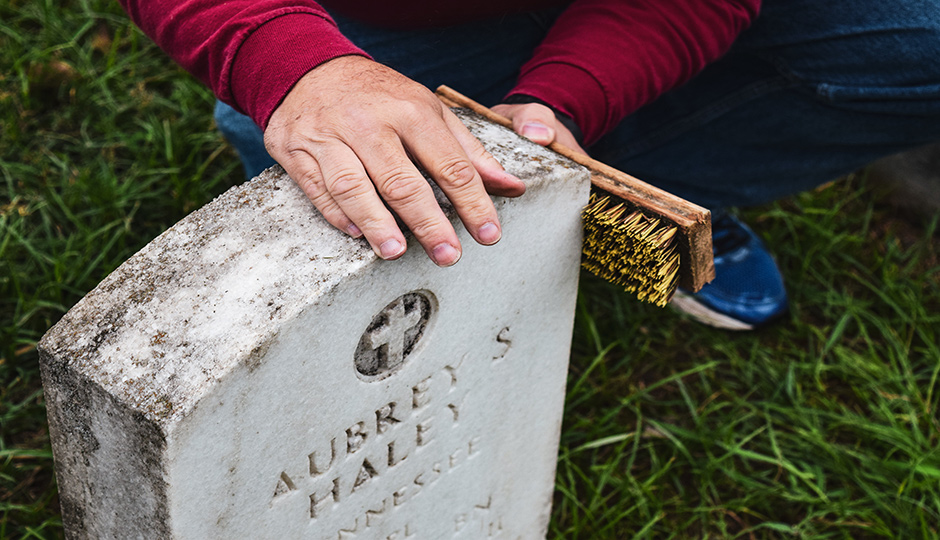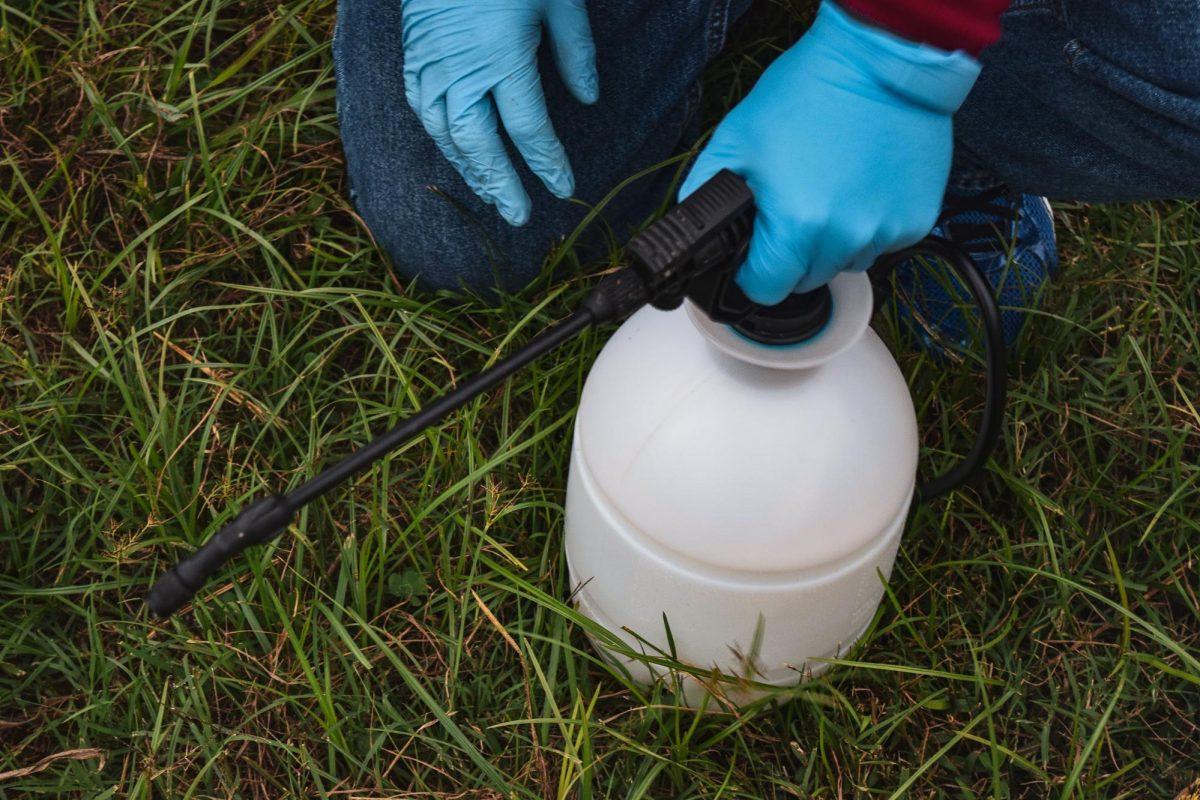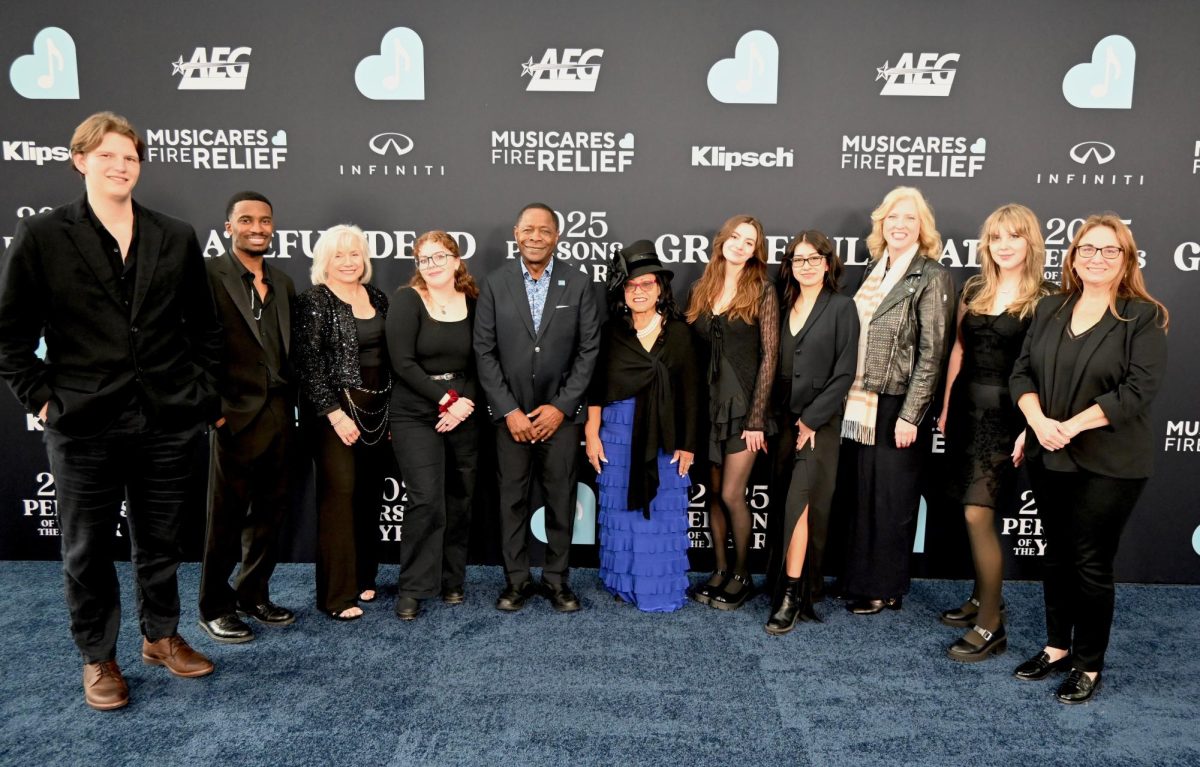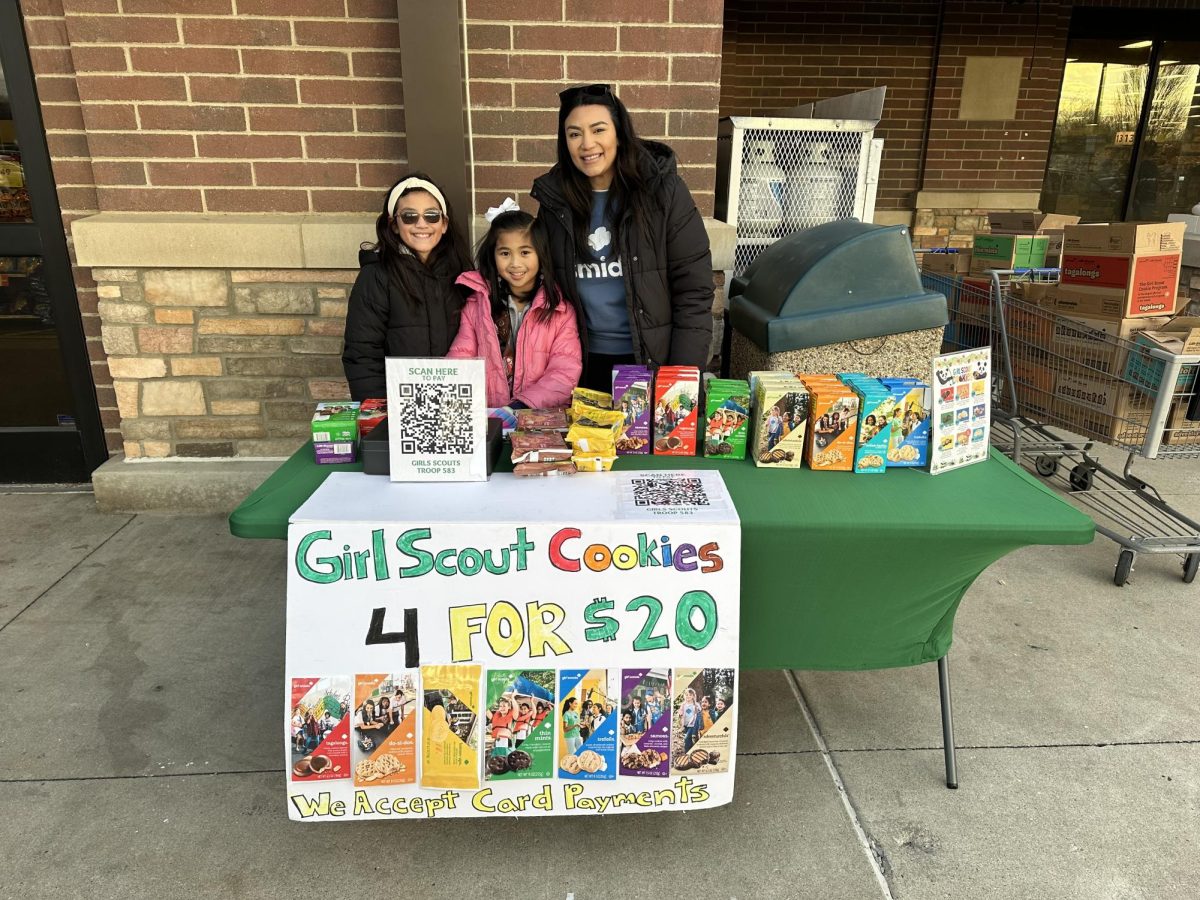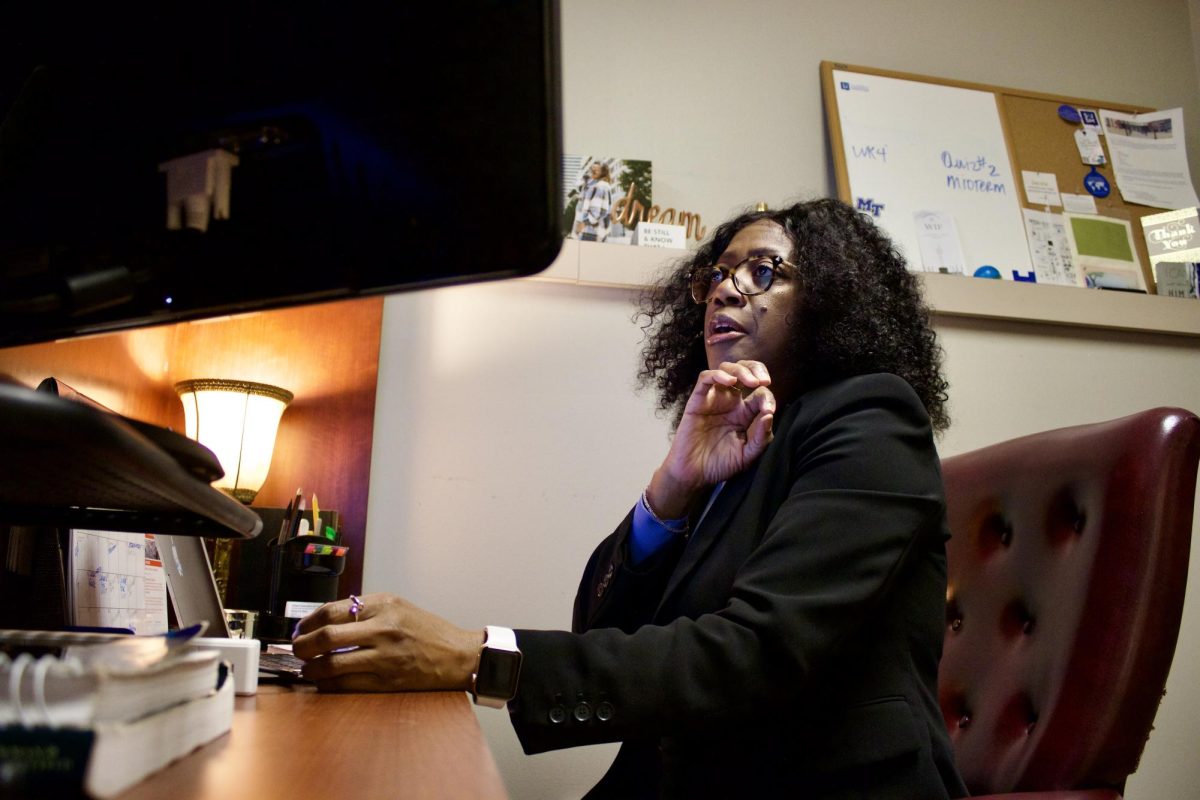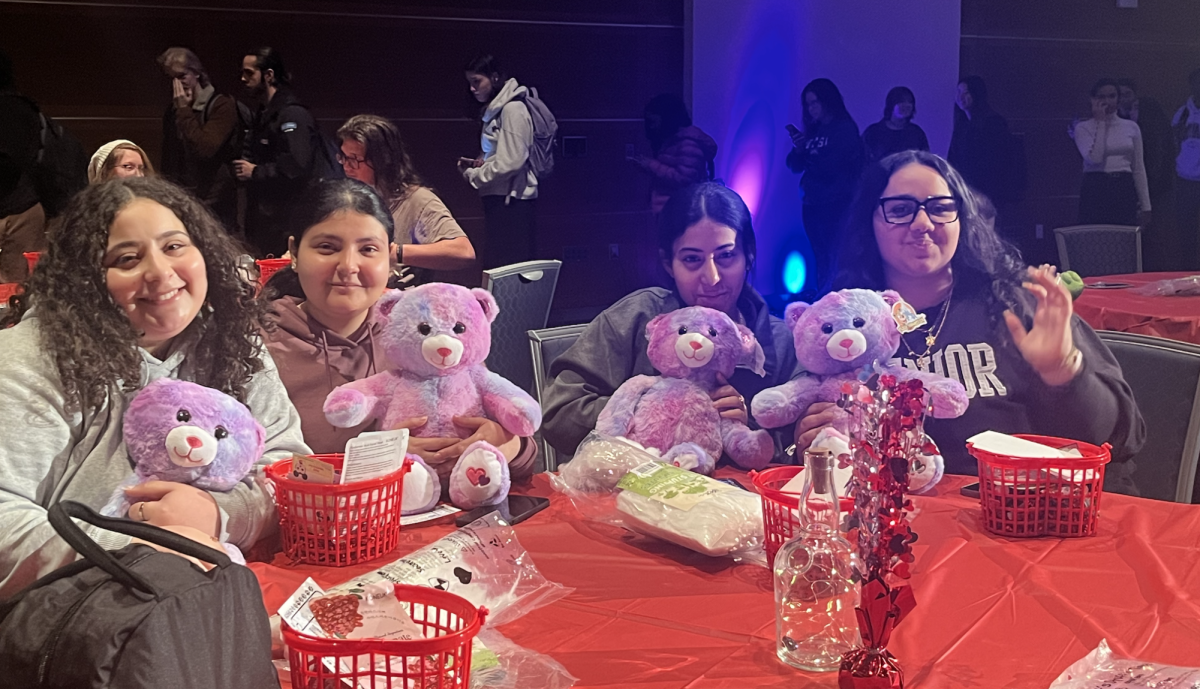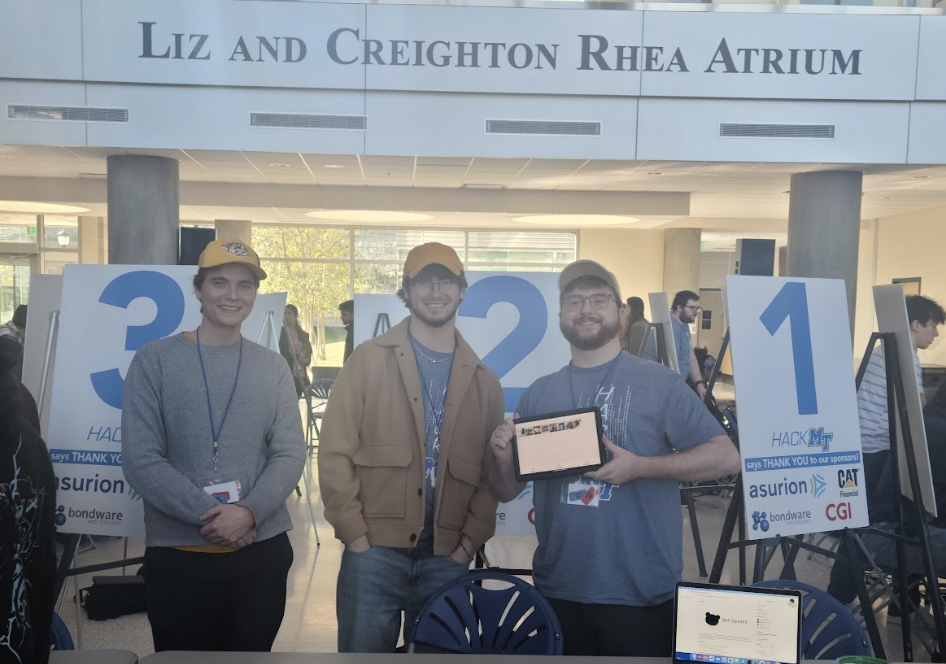Story and photos by Mamie Lomax / Assistant Lifestyles Editor
The sky was colored various shades of gray as the clouds hung low. The wind blew rather harshly, and the chilly air sent shivers down my spine; it was a trademark October day, and I couldn’t think of a better place to spend it than in a cemetery.
I drove into Evergreen Cemetery in Murfreesboro as Jeff Milstead, 58, was walking down the paved, winding road throughout the seemingly thousands of headstones surrounding us. Milstead was walking rather briskly, stopping every now and again to take photos of headstones, mostly the final resting places of former soldiers, sailors and airmen. Once he spotted me, a cheeky grin lit up his face. He was wearing jeans and a Riverdale High School basketball shirt, where he volunteers as PA announcer and “general flunky,” as he explained. His white hair was standing out against his tan skin, and his Nikon D3000 hung around his neck. He waved, waiting for me to get out of the car before exclaiming, “You must be Mamie Lomax!”
Milstead was meeting with me because we share the same passion: cleaning and conserving headstones.
Milstead grew up in a cemetery, you could say. There was an old graveyard within spitting distance from his childhood home, and the cemetery behind his family’s church was a frequent “hang” for him, particularly throughout his teenage years.
“I used to go over there, and that was my hang out,” Milstead said. “It was great, and you wanna know why? Because there was no one else around. Nobody.”
Milstead explained that he spent most of his childhood in a funeral home, attending various funeral services of his parent’s friends and family members. He says that he was always eerily fascinated with funeral homes, which explains why he ended up working as a financial auditor for the Tennessee Funeral Board for four years. The board licenses and regulates funeral directors, embalmers and funeral establishments. He audited “Pre-Need” plans, which is where people pay for their loved one’s funeral up front. Milstead claims that he’s “seen it all” through the job.
“My dad was 48 and my mom was 43 when I was born, so guess what happened?” Milstead asked. “Every ‘durn’ week somebody died. So guess where I went every week? Yep. The funeral home and then slowly to the cemetery.”
It was seemingly meant to be for Milstead to gain interest in cleaning headstones, not only because of his constant exposure to funerals and cemeteries but because of his dedication, love and care for all sorts of veterans. Grave Undertakings (Monument Restoration and Cleaning) is Milstead’s project that has taken-off and was “formed to promote the preservation of history through the care and restoration of World War II casualties.” However, “since then, Milstead continues to restore and research the history of our fallen heroes,” according to the Grave Undertakings Facebook page. Milstead’s father and uncle served in WWII. His uncle, along with Cpl. Aubrey Haley, were buried in Margraten, Holland, before their bodies were brought back to the U.S.
“I thought my uncle was buried overseas and then I found out that he was buried in Chattanooga,” Milstead said. “So I found the cemetery, and you know, it’s a little bitty country cemetery, up on a hill, daylight couldn’t even get back in there. It was all dark, damp and dirty. His tombstone, you couldn’t even read it. It was so filthy, but … I stood there in front of it and was just in awe of him. I knew this was my calling.”
The wind was chilly as we stood outside his car, taking all the supplies that we needed out of the trunk. We both had our arms full of supplies as he showed me over to Haley’s resting place. The air seemed heavy as we stood in front of his almost white, but sparingly mold-laden, headstone. Milstead was eager, as was I, and he handed me a sheet of newspaper articles he had printed out; they were all articles from the Daily News Journal written when Haley was wounded, when he passed away and when he was to be buried at Evergreen cemetery.
Haley was the son of Lascassas parents, born on a cold December night, the 22nd, of 1924. Haley spent his high school career at Central High in Murfreesboro and entered into the service on March 12, 1942, going overseas in September of 1944. After Haley was wounded, he returned to the line, working as a member of the 743 Tank battalion unit of the Ninth Army. Haley was killed in action in the European Theatre of Operations on March 26, 1945, around a month after the Daily News Journal reported his wounding and only six months after he had gone overseas.
“He was buried in a cemetery in Margraten, Holland, where my uncle was also buried,” Milstead said. “During the war, specifically during WWII, the soldiers were buried relatively close to where they died. They would establish a temporary cemetery. After the war, the U.S. said that if you wish to have your loved one brought home, we will do that. It cost $650 or so dollars, so Haley’s family said to bring him home.”
Haley was buried in Evergreen Cemetery in early July 1949, just over four years after he had been killed in action.
“There is a very famous scene in the movie ‘Patton’ that shows one of Patton’s soldiers that was killed, and I’ve always remembered this, even being a very little boy when I first saw it, there was no wood for coffins,” Milstead said.
Milstead held back his emotions as he spoke “The Quartermasters Corp was in charge of burying the soldiers … Mattress covers, zippable mattress covers is what our soldiers were placed in. If they didn’t have that, a parachute, a tarpaulin or the clothes they died in, and when they took the temporary cemetery up, they took everything and brought it home. So, I get emotional about this.”
Just a few yards away from Haley, the Prater brothers, who were both veterans as well, were buried. Milstead took a second, before we began cleaning Haley’s headstone, to show me where the Prater brothers were buried and how they got there.
Stanley Prater’s stone was one that Milstead had already spent time cleaning and taking care of. The headstone of his brother, Leonard, wasn’t even recognizable as the white, marble stone that represents a veteran soldier; Milstead had yet to clean the second Prater brother’s final resting place. I looked at Milstead, amazed in what I saw and how much of a difference his work really makes.
“Look at the dates, May 4, 1950, and December 27, 1951,” Milstead said. “That’s after the war. Leonard died of illness in 1951. He got sick and died, but there is a third Prater brother. I don’t know where he is, but following a night of drunken revelry, the third Prater brother murdered Stanley. No crap! All three brothers were in WWII and they all, obviously, survived. He said in the paper, after the murder, that, ‘Yeah, we was out drunk, and I woke up and hell, he was dead!’ They were so drunk, and the third brother took a beer bottle and killed him. After you survive five years of war, you come home and get killed by your brother.”
Milstead took me back over to Haley’s final resting place, taking tools out of a recycled cat-litter box, which he thought I would make fun of him for but was perfectly useful.
“Here is what we’re gonna do first: ordinary bristle brush, never ever ever use metal,” Milstead said.
He began moderately scrubbing the marble stone.
“See the stuff coming off?” he asked. “This is 70 years worth of mold, lithine, air pollution, just crap.”
In order to properly clean a headstone, Milstead explained all the proper tools needed: a soft bristle brush, a small bristle brush, wooden cuticle sticks, plastic paint scrapers, Orvus soap, one gallon sprayer or bucket, lots of water and the “magic” D/2 Biological Solution.
Milstead stopped, getting up and taking his phone from his pocket.
“You might think I’m cracked, but I don’t care if ya do, okay?” Mistead said. “We gotta have tunes.”
I grinned.
“This is the soundtrack to ‘Saving Private Ryan,’” Milstead said. “I either do this or ‘Pearl Harbor.’”
Milstead explained that it’s best to work from the bottom of the stone to the top, so the cleaning doesn’t streak the stone. After mixing the Orvus soap, one tablespoon to one gallon of water, it’s important to cover the entire stone generously, soaking any biological growth. It’s important to wait for the soap and water to soak into the stone, which then leads to using the paint scraper to get rid of any biological growth that you can. The small brush and wooden sticks come in handy for cleaning out letters, numbers and any sort of decoration on the stone.
“Coat the bottom third to half of the stone with the Orvus soap solution, using a circular motion to scrub the stone from the bottom up,” Milstead said. “I usually work in an eight to 10 inch area across the stone and using a circular motion will help prevent streaking of the stone. Do this for the entirety of the stone, making sure to keep the surface wet. I always clean the stone twice, just so I make sure to get everything that I can. Rinse the stone a final time, and now, it’s time for the real magic. Take your bottle of D/2, which is a biodegradable, quaternary ammonium solution, and liberally coat the stone. The D/2 will get rid of anything that you weren’t able to get off the stone.”
Milstead explains that after spraying, you will be able to see a difference in the lightness of the stone within a couple of days. It takes up to six to eight weeks and sometimes longer for the full effect of the biological solution. After around eight weeks or so, Milstead says that you can re-apply the D/2 to take care of any problem areas that might arise.
Milstead and I spent around an hour cleaning Haley’s stone together. Our knees were muddy, and a sting of pain shot through my arm as I continued to scrub.
“This is definitely where I build up my arms,” Milstead said.
He laughed as I told him about my arm, which is still sore, by the way.
We stood in front of his clean stone, shining white against the damp surroundings.
Milstead sighed, saying, “I’d like to think that Cpl. Haley is sitting somewhere right now, thinking, ‘Well, I’ll be dad-blame. After all these years, someone has come to see me.’ He knows.”
After we gathered the supplies and put them back into the trunk, Milstead asked if I’d like to see the other stones he has cleaned in Evergreen. We chatted consistently as we walked through Evergreen’s hauntingly beautiful landscape. He took me through various stones, stopping occasionally to tell a funny story or tell me more about the soldier’s stones that he has cleaned.
We came up to a darkened area, shaded by a massive pine tree; a white marble cross stood proudly, glistening occasionally when the wind blew and shifted the patterns splattered across with orange streetlight. Milstead was beaming; it was evident this was his passion, and it was a beautiful thing to witness. He gripped unto the stone.
“This is Lt. Robert Brown, and he was one of the very first stones I ever cleaned,” Milstead said.
Brown was killed in action during WWI in the Argonne Forest in France on Oct. 4, 1918; he was only 21 years old.
As darkness descended upon us, Milstead brought me to two headstones toward the back of the cemetery. Two white, marble stones seemingly stuck out against the darkness as we approached them. Milstead dropped to his knees in front of them, David M. Holden and John E. Hand. Milstead cleaned their stones for the first time this summer, researching them and their history but not coming up with much.
“There are some family members of Holden somewhere,” Milstead said. “Hand, I’ve tried to find his son, couldn’t find him. I couldn’t find anyone that knew them.”
Milstead, still on his knees, begin to tear up, unable to hold his emotions back anymore.
“So now, these are my boys, too,” he said.
His tears showed me that this just isn’t a hobby. This work has meaning for him and the men who died for our country.
“When I was doing Holden’s stone, it was July, and it was 9 in the morning, hotter than blue blazes out here,” Milstead said. “I’m dying in the heat. I was on my knees scrubbing, and I had one arm wrapped around the stone and the other scrubbing. This lady then see me and asks me if I’m hugging the stone, for she couldn’t see what I was doing, but I said no. I’m hugging the man. But, the man, and that’s why I do this. There is nothing in it for me, I don’t want anything. I just want them to be remembered. They’re taken care of now. I don’t want anything but for someone to pass by and say, ‘Those are soldiers,’ and that’s all.”
Milstead and I walked side-by-side through the darkening cemetery, back to our cars. The orange street lights cast patterns across the winding road, dancing off the shiny tops of the granite stones that surrounded us. I told Milstead that he had taught me more than how to clean a headstone. He had shown me inextinguishable passion and had taught me that every stone in the cemetery had a story, waiting to be uncovered.


